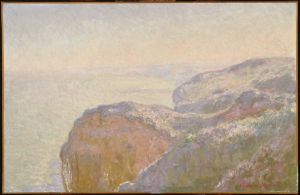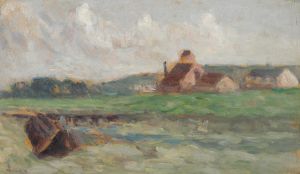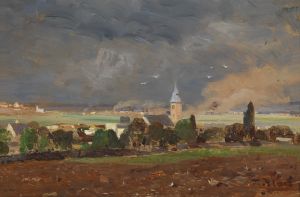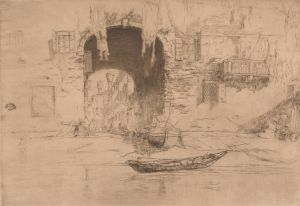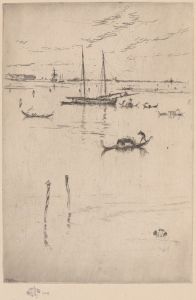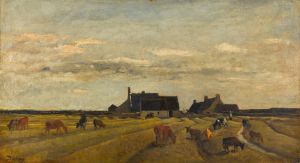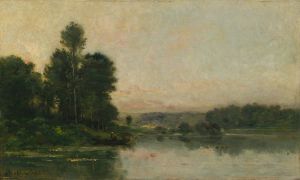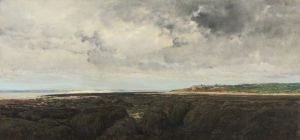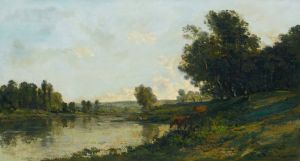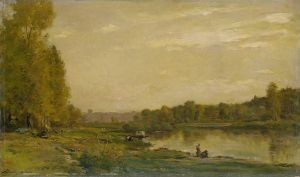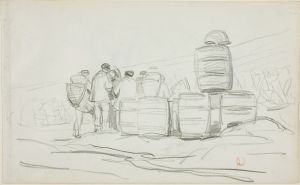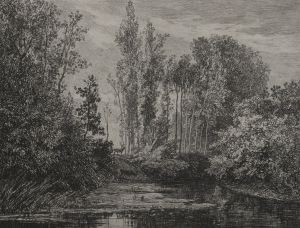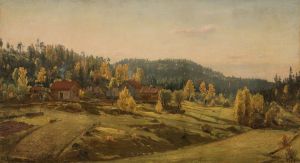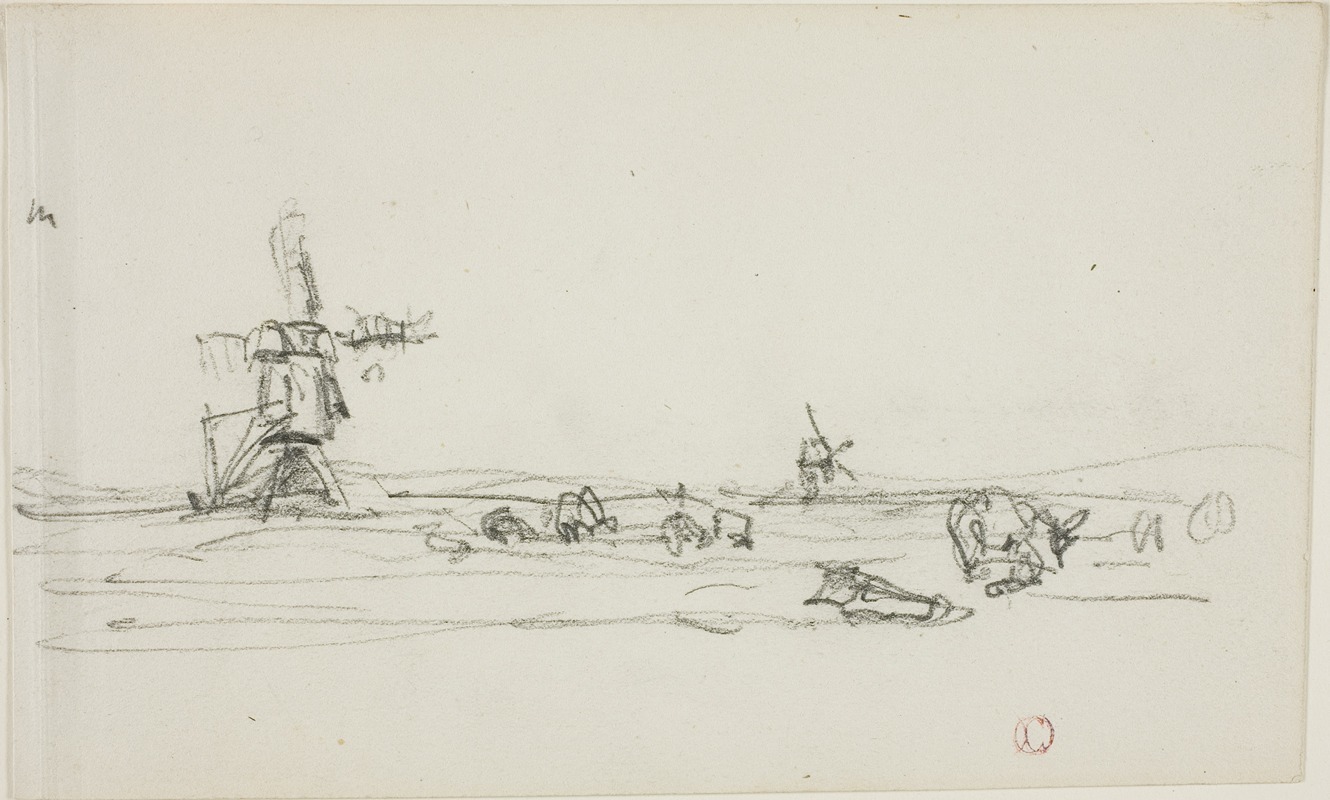
Landscape in Holland
A hand-painted replica of Charles François Daubigny’s masterpiece Landscape in Holland, meticulously crafted by professional artists to capture the true essence of the original. Each piece is created with museum-quality canvas and rare mineral pigments, carefully painted by experienced artists with delicate brushstrokes and rich, layered colors to perfectly recreate the texture of the original artwork. Unlike machine-printed reproductions, this hand-painted version brings the painting to life, infused with the artist’s emotions and skill in every stroke. Whether for personal collection or home decoration, it instantly elevates the artistic atmosphere of any space.
Charles-François Daubigny (1817–1878) was a prominent French landscape painter associated with the Barbizon School, a group of artists who emphasized naturalistic depictions of rural scenes and landscapes. One of his notable works, Landscape in Holland, reflects his deep connection to nature and his innovative approach to plein air painting, which influenced later Impressionist artists.
Landscape in Holland was created during Daubigny’s travels to the Netherlands, a country whose flat terrain, expansive skies, and intricate waterways captivated him. The painting showcases Daubigny’s characteristic style, which combines a naturalistic representation of the landscape with a poetic sensibility. In this work, he captures the serene beauty of the Dutch countryside, likely featuring elements such as canals, windmills, or open fields, which were common motifs in his Dutch-inspired works. His use of soft, muted tones and loose brushwork conveys a sense of tranquility and atmospheric depth.
Daubigny’s travels to Holland were part of his broader exploration of European landscapes, and he was particularly drawn to the Dutch tradition of landscape painting, which had flourished during the 17th century. Artists like Jacob van Ruisdael and Meindert Hobbema influenced his appreciation for the interplay of light, water, and sky. In Landscape in Holland, Daubigny’s ability to capture the fleeting effects of light and weather reflects this inspiration while also showcasing his own artistic innovations.
The painting is an example of Daubigny’s transition from the more structured compositions of earlier landscape traditions to a freer, more spontaneous approach. This shift was facilitated by his use of a studio boat, which allowed him to paint directly from nature while traveling along rivers and canals. This method enabled him to observe and depict the natural world with immediacy and authenticity, qualities evident in Landscape in Holland.
While specific details about the current location or provenance of Landscape in Holland are not readily available, Daubigny’s works are held in major museums and collections worldwide, including the Musée d’Orsay in Paris and the National Gallery in London. His contributions to landscape painting and his influence on the Impressionists, particularly Claude Monet and Camille Pissarro, have solidified his legacy as a pivotal figure in 19th-century art.
Landscape in Holland exemplifies Daubigny’s mastery of capturing the essence of a place through his harmonious compositions and sensitive rendering of light and atmosphere. It remains a testament to his role in bridging the Barbizon School and the Impressionist movement.





